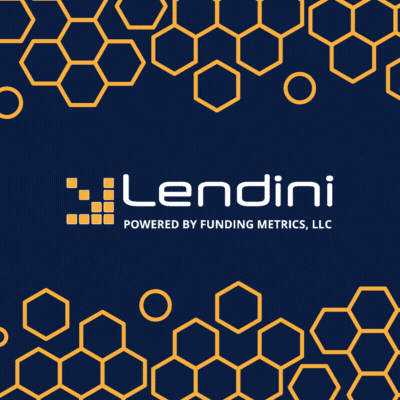The Shifting Landscape of SBA Lending: What 2025 Data Reveals
- Staff Writer

- Jul 23
- 4 min read
The numbers tell a fascinating story. While the average SBA 7(a) loan in 2025 clocks in at $451,847, a significant drop from 2021's hefty $704,581, the real headline isn't about shrinking loan sizes. It's about explosive growth in access to capital that's reshaping how we think about small business lending.
The Volume Revolution: More Loans, Smaller Checks
Here's what should grab every lender's attention: 2025 is on track to approve more than 80,000 SBA 7(a) loans, representing a staggering 50% increase from 2021's numbers. This isn't just growth, it's a fundamental shift in lending behavior that savvy commercial finance professionals are already capitalizing on.
The math is compelling. Per a study by iBusiness Funding, as average loan sizes decreased by 36% since 2021, the number of approvals surged. This trend suggests we're witnessing the democratization of SBA lending, with more entrepreneurs gaining access to the capital that was previously concentrated among fewer, larger borrowers.
For lenders, this represents both opportunity and strategic recalibration. The days of relying heavily on large-ticket transactions are evolving into a volume-based model that demands operational efficiency and streamlined processes.

The Microbusiness Moment
Perhaps the most intriguing development is the renaissance of microbusiness lending. Companies with five or fewer employees are seeing notable increases in loan sizes in 2025, signaling that the smallest businesses are not only surviving but thriving enough to warrant larger investments.
This trend carries profound implications for portfolio strategy. Fintech platforms currently account for about 25% of SBA loan facilitation, and that number could reach 30% or more by 2025, suggesting that technology adoption is becoming crucial for serving this growing segment effectively.
The data reveals that LLCs, in particular, are driving much of this growth. After years of approvals ranging from 30,000 to 43,000, LLCs have already secured over 38,000 approvals in just the first half of FY2025. This acceleration points to improved creditworthiness and growing entrepreneurial confidence among smaller business formations.
Industry Hotspots: Where the Action Is
Five industries continue to command loan sizes well above the national average, and their performance offers a roadmap for targeted lending strategies:
Accommodation and Food Services - Despite pandemic challenges, this sector shows remarkable resilience Health Care and Social Services - Benefiting from demographic trends and healthcare expansion Manufacturing - Riding the wave of reshoring and supply chain localization Retail Trade - Adapting to omnichannel commerce demands Wholesale Trade - Capitalizing on supply chain disruption opportunities.
These industries have averaged a 22% increase in loan approvals year-over-year from 2021 to 2024, with 2025 numbers suggesting they'll significantly surpass 2024 performance. For commercial lenders, these sectors represent not just lending opportunities but potential for bundled product offerings and deeper relationship banking.
The Interest Rate Reality Check
The weighted average interest rate of 9.46% in 2025 tells a nuanced story. While this represents a substantial increase from 2022's 5.85%, it's actually 0.67% lower than 2024's average, a surprising development given that the current prime rate (as of July 11, 2025) is 7.5%.
This decline suggests lenders are finding ways to remain competitive while managing portfolio risk. It also indicates that borrower demand remains robust despite higher rates, with businesses continuing to view SBA loans as attractive financing vehicles even in a more expensive money environment.
Term Structure Dynamics: The 15-Year Sweet Spot
Average loan terms have settled just under 15 years, down from nearly 18 years in 2021. While loan sizes dropped 36%, term lengths only decreased 16.8%, a calculated approach that maintains payment affordability while reducing long-term interest exposure.
This term compression reflects sophisticated risk management by both lenders and borrowers. Shorter terms reduce interest rate risk while maintaining cash flow manageability, suggesting a maturing market that's learned from recent economic volatility.
Technology as the Great Enabler
The surge in loan approvals isn't happening in a vacuum. The adoption of AI-powered platforms for loan origination is dramatically improving processing efficiency and enabling lenders to serve more borrowers profitably. This technological transformation is particularly crucial for handling the increased volume of smaller loans that characterize today's market.
The SBA lending market remains strong in 2025, with steady demand for loans, particularly in the $100K-$500K range, a sweet spot that benefits from automated underwriting and streamlined processing.
Strategic Implications for Commercial Lenders
The 2025 SBA landscape demands strategic recalibration across several dimensions:
Operational Efficiency: Higher loan volumes with smaller average sizes require streamlined processes and technology adoption to maintain profitability.
Portfolio Diversification: The microbusiness surge offers opportunities for lenders willing to develop specialized expertise in serving smaller clients.
Product Innovation: Rising interest rates create demand for creative solutions—longer terms, interest-only periods, and refinancing products that help borrowers manage costs.
Industry Focus: Concentration in high-performing sectors like healthcare, accommodation, and manufacturing can drive both volume and margins.
Relationship Depth: Smaller loan sizes make bundled products and fee income increasingly important for relationship profitability.
The Competitive Landscape Shift
Perhaps most telling is the transformation occurring among top SBA lenders. Lendistry's surge from #87 to #20 is one of the most notable ranking jumps, illustrating how nimble, technology-forward lenders can rapidly gain market share in this evolving environment.
This suggests that traditional competitive advantages, branch networks, legacy relationships, large balance sheets, while still important, are being augmented by operational efficiency and borrower experience capabilities.
Looking Forward: The 2025 Opportunity
The data paints a picture of a robust, evolving SBA market that rewards strategic thinking and operational excellence. For commercial lenders, success in 2025's SBA landscape requires embracing volume over individual transaction size, investing in technology for operational efficiency, and developing deep expertise in high-growth sectors and microbusiness lending.
The question isn't whether the SBA market will continue growing, the data makes that clear. The question is which lenders will position themselves to capitalize on the tremendous opportunity that 2025's lending landscape presents.




Comments